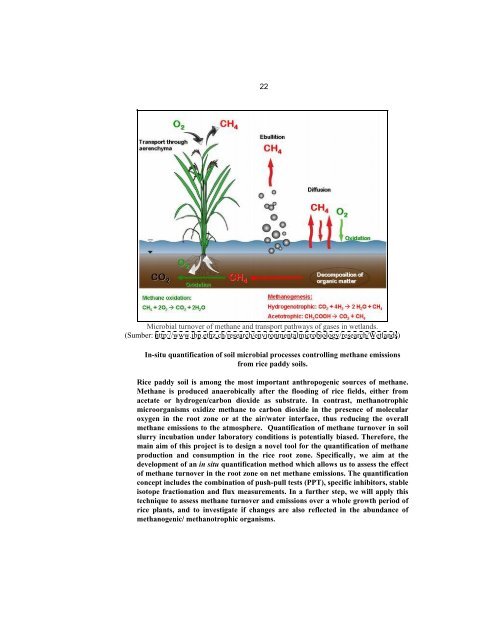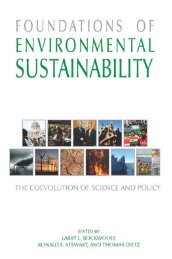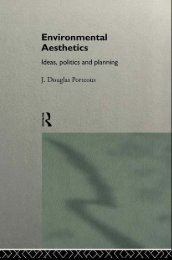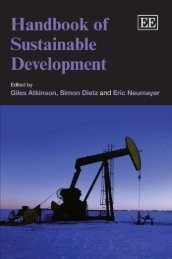Create successful ePaper yourself
Turn your PDF publications into a flip-book with our unique Google optimized e-Paper software.
22<br />
Microbial turnover of methane and transport pathways of gases in wetlands.<br />
(Sumber: http://www.ibp.ethz.ch/research/environmentalmicrobiology/research/Wetlands)<br />
In-situ quantification of soil microbial processes controlling methane emissions<br />
from rice paddy soils.<br />
Rice paddy soil is among the most important anthropogenic sources of methane.<br />
Methane is produced anaerobically after the flooding of rice fields, either from<br />
acetate or hydrogen/carbon dioxide as substrate. In contrast, methanotrophic<br />
microorganisms oxidize methane to carbon dioxide in the presence of molecular<br />
oxygen in the root zone or at the air/water interface, thus reducing the overall<br />
methane emissions to the atmosphere. Quantification of methane turnover in soil<br />
slurry incubation under laboratory conditions is potentially biased. Therefore, the<br />
main aim of this project is to design a novel tool for the quantification of methane<br />
production and consumption in the rice root zone. Specifically, we aim at the<br />
development of an in situ quantification method which allows us to assess the effect<br />
of methane turnover in the root zone on net methane emissions. The quantification<br />
concept includes the combination of push-pull tests (PPT), specific inhibitors, stable<br />
isotope fractionation and flux measurements. In a further step, we will apply this<br />
technique to assess methane turnover and emissions over a whole growth period of<br />
rice plants, and to investigate if changes are also reflected in the abundance of<br />
methanogenic/ methanotrophic organisms.





